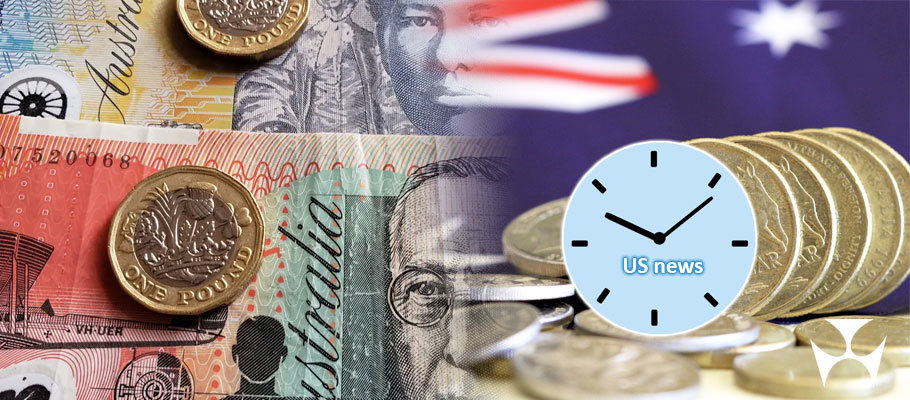
Published: May 3rd, 2023
The Pound (GBP) to Australian Dollar (AUD) rate returned this week to levels last seen before the pandemic, however further rises are being blocked by technical resistance. Analysts believe GBP will consolidate between 1.8854 and 1.9083 this week as a result.
The Aussie outperformed other G10 majors in the opening session of the week commencing 1st May 2023, after being a laggard for both the past 30 days and the calendar year-to-date. GBP/AUD has now risen more than six percent above its YTD average, the highest level reached since the Ukraine war began.
The pair traded briefly north of 1.90 last week during a quiet period for UK economic newsflow. Its fortunes now hinge on a busy schedule of economic prints from America, plus the fallout from yesterday's Reserve Bank of Australia (RBA) decision on rate hikes.
Citing the risk of imported inflation becoming embedded in domestic services prices, the RBA surprised markets by green lighting an eleventh increase in the cash rate.
In a market commentary on Monday, analysts at Westpac said the RBA would be looking for excuses to ‘extend the current pause’ on rate rises. Worries about long-term inflation stickiness have clearly pushed the central bank's policy committee to act.
‘While recent data indicate a positive decline in inflation, the core forecast shows it could be two years or more before inflation falls back into our target range,’ RBA Governor Philip Lowe said in a statement.
Other factors impacting GBP/AUD originate in America, where the Dollar is likely to move in response to the outcome of today's Federal Reserve (Fed) meeting.
The US central bank will make an interest rate decision. There will also be a new PMI Survey from the US Institute for Supply Management to pour over, plus April non-farm payrolls print.
Fed policymakers are broadly expected to raise the interest rate to 5.25 per cent, though there is a possibility that rates remain unchanged. The bank could also opt to simply signal that it's reluctant to raise borrowing costs any more in the near term.
If today's decision leads to profit-taking between Greenback buyers and holders, it could trigger a corrective setback for GBP/AUD.
The post-lockdown ‘China reopening’ rally for AsiaPac currencies looks to have had a smaller impact on the Australian Dollar than expected, but currency strategists at Bank of America still believe the Aussie could benefit from external factors.
A report from the US bank's Asia Forex Strategy unit says the ‘upside risk to Chinese trade growth hasn't been accurately priced.’ The assessment comes as the Australian fiat extends a losing streak against the Greenback, Euro, and Pound while the rebound analysts have been waiting for in the world's second-largest economy had so far underwhelmed.
China's National Bureau of Statistics reported in March that the country';s industrial profits were down almost 23 per cent year-on-year for January and February 2023.
But BoA's research also suggests China's economy will gain momentum in the coming months, despite the soft start to the year.
It's a fact that AUD has underperformed when compared to other assets that tend to sway with the ups and downs of China's economy. With the end of Beijing's zero-covid policy, growth is now expected to accelerate.
BoA's analysts say there have been indications that ‘green shoots are starting to appear,’ particularly in China's property sector. Increasing international travel bookings from China also bode well for Australia's trade outlook.
The Australian Dollar has been running in the sand for much of the first quarter, falling back 4.59 per cent against the US Dollar in April 2023 and by 2.33 per cent against the pound. Against the Euro, the Aussie fell by 2.14 per cent.
AUD's lower trend began at roughly point where the buzz around China's ‘great reopening’ started to fade, BoA says.
In January 2023, investors were betting on a rapid reopening in the world's second-largest economy and gains in the Australian Dollar and other China-focused assets. The return of big-spending Chinese tourists and international students was also tipped to give Down Under an additional growth fillip.
In early March, AUD was holding firm as the best-performing G10 major for the year-to-date, despite gains by many of its peer currencies.
At the time, forex traders were looking for the Reserve Bank of Australia to post its ninth increase to the cash rate since April 2022, with an uptick to the benchmark of 25 basis points, or 3.35 per cent before another rate hike potentially arrives in March.
The consensus forecast said the central bank would raise the rate again next month, with some prospect of another 25-basis point rise, bringing the cash rate to 3.6 per cent in April, if it happens.
‘The indicators we've seen in Australian domestic economic data over the past 30 days or so have been up and down. Labour figures for December 2022 disappointed as employment fell, surprising most analysts,’ said an analyst note from the Commonwealth Bank of Australia.
‘A surprisingly strong print for fourth-quarter CPI inflation, paired with a plunge in December retail sales suggests the current cost-of-living crisis in Australia is deeply embedded.’
In late March 2022 the Aussie was up against the Euro, Dollar, and British Pound as forex traders reacted to signals that an interest rate by the Reserve Bank of Australia may be in the offing.
Minutes from the RBA's February policy meeting suggested interest rates could rise as quickly as April far earlier than the central bank had been signaling since the start of the year.
In fact, it was just in February 2022 that RBA Governor Phil Lowe told The South China Morning Post that the bank was ‘being patient’ on interest rates ‘in a way that markets with much higher rates of inflation simply can't.’